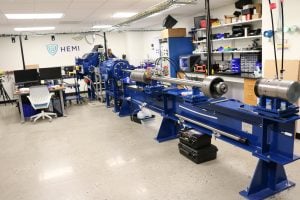
What happens to a tank at the micro level when it’s hit by a projectile during combat? Or to the surface of an asteroid as it collides with a planet in space? Researchers at the Hopkins Extreme Materials Institute are using equipment located in the Hypervelocity Facility for Impact Research Experiments to find answers to questions like these.
 Employing a specialized hypervelocity gas gun, they launch projectiles a few millimeters in diameter at velocities up to 7 kilometers per second (Mach 20), while ultra -high-speed cameras capture the resulting events. This allows the researchers to view, in real time, how materials fail during extreme impact and to collect data that measure mechanics, strain rates, temperatures, physics, and chemistry at very high pressures. HEMI scientists hope to use this information to understand and, eventually, create materials that will better protect people, structures, and the planet.
Employing a specialized hypervelocity gas gun, they launch projectiles a few millimeters in diameter at velocities up to 7 kilometers per second (Mach 20), while ultra -high-speed cameras capture the resulting events. This allows the researchers to view, in real time, how materials fail during extreme impact and to collect data that measure mechanics, strain rates, temperatures, physics, and chemistry at very high pressures. HEMI scientists hope to use this information to understand and, eventually, create materials that will better protect people, structures, and the planet.




